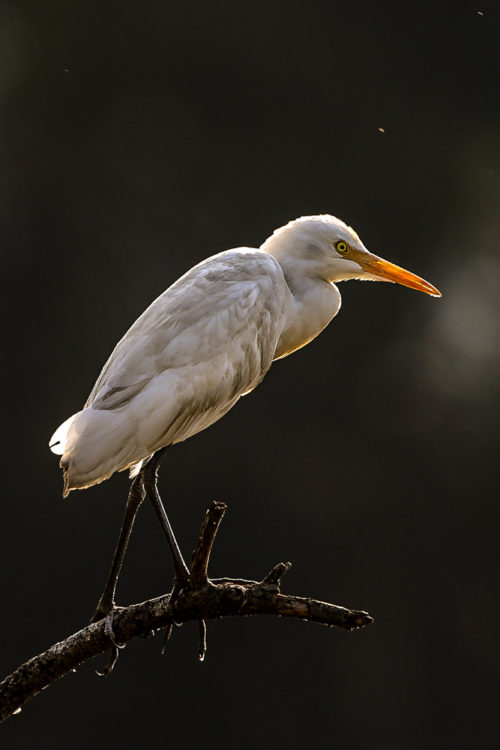
I found these cattle egrets (Bubulcus ibis) on a dry tree branch at Gurupura. They were all huddled together over a marshy land there. I wanted to create a dramatic contrast with dark background and a rim light for these white birds. It was 4PM with bright light all around. I had Canon EOS 5D Mark III camera with Canon EF 500mm f/4L IS II USM Lens with me.
Since these birds are not shy of humans, I could go around and find a right place to get the bird how I wanted. Among the 6 birds who were preening around, I found only one suited for my angle which became the hero of shooting session. This I feel is important else I will be trying to shuffle between several of them and might miss my goal. I positioned myself east of the birds, so that 4PM Sun was behind the bird. There was a darker clump of trees, behind the bird quite far away. They become my out of focus and dark background. Foreground light and background on the bird was around 1.5 stops different, thus giving you a great rim light you see here. If it was later part of the evening, since the foreground light drops, you get much darker foreground. This becomes almost a silhouette. So choosing right position, right direction of light, right time of the day and right angle of capture helps to create photograph as you want.
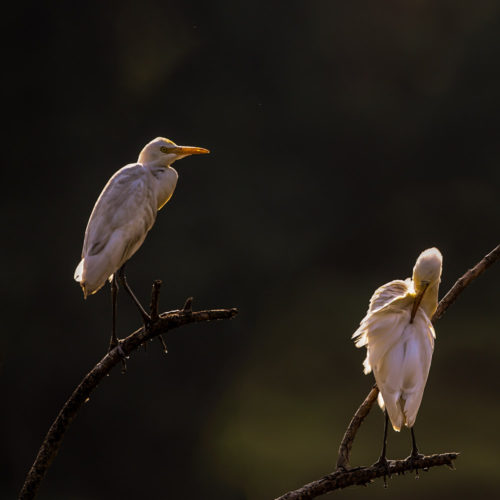
The cattle egret (Bubulcus ibis) is a cosmopolitan species of heron (family Ardeidae) found in the tropics, subtropics and warm temperate zones. It is the only member of the monotypic genus Bubulcus. Despite the similarities in plumage to genus Egretta and the common name itself, it is more closely related to the herons of Ardea. Originally native to parts of Asia, Africa and Europe, it has undergone a rapid expansion in its distribution and successfully colonised much of the rest of the world in the last century.
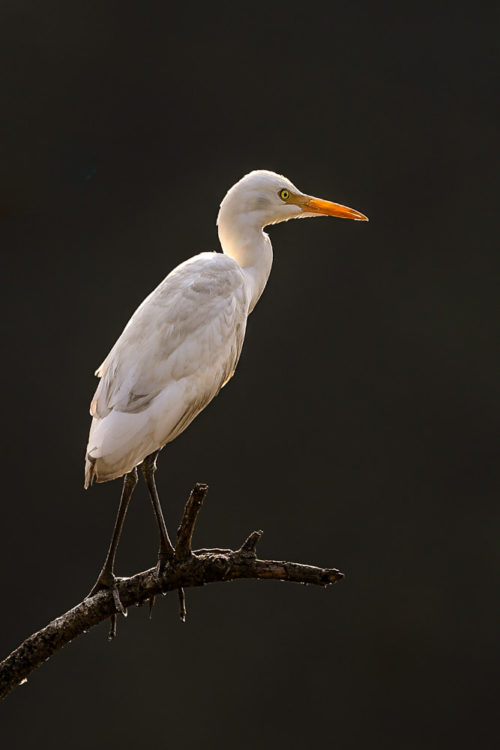
It is a white bird adorned with buff plumes in the breeding season. It nests in colonies, usually near bodies of water and often with other wading birds. The nest is a platform of sticks in trees or shrubs. Cattle egrets exploit drier and open habitats more than other heron species. Their feeding habitats include seasonally inundated grasslands, pastures, farmlands, wetlands and rice paddies. They often accompany cattle or other large mammals, catching insect and small vertebrate prey disturbed by these animals. Some populations of the cattle egret are migratory and others show post-breeding dispersal.
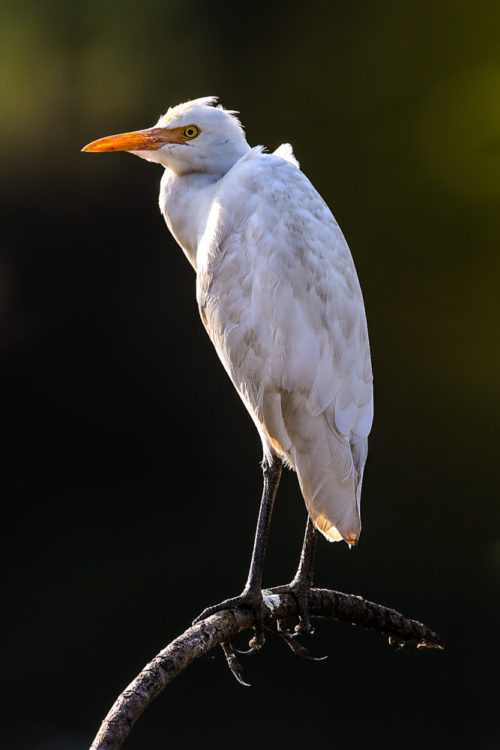
The adult cattle egret has few predators, but birds or mammals may raid its nests, and chicks may be lost to starvation, calcium deficiency or disturbance from other large birds. This species maintains a special relationship with cattle, which extends to other large grazing mammals; wider human farming is believed to be a major cause of their suddenly expanded range. The cattle egret removes ticks and flies from cattle and consumes them. This benefits both species, but it has been implicated in the spread of tick-borne animal diseases.
The cattle egret is a stocky heron with an 88–96 cm wingspan; it is 46–56 cm long and weighs 270–512 g. It has a relatively short thick neck, a sturdy bill, and a hunched posture. The non-breeding adult has mainly white plumage, a yellow bill and greyish-yellow legs. The plumage you see here in the blog is that of non-breading variety. During the breeding season, adults develop orange-buff plumes on the back, breast and crown, and the bill, legs and irises become bright red for a brief period prior to pairing. The sexes are similar, but the male is marginally larger and has slightly longer breeding plumes than the female; juvenile birds lack coloured plumes and have a black bill.
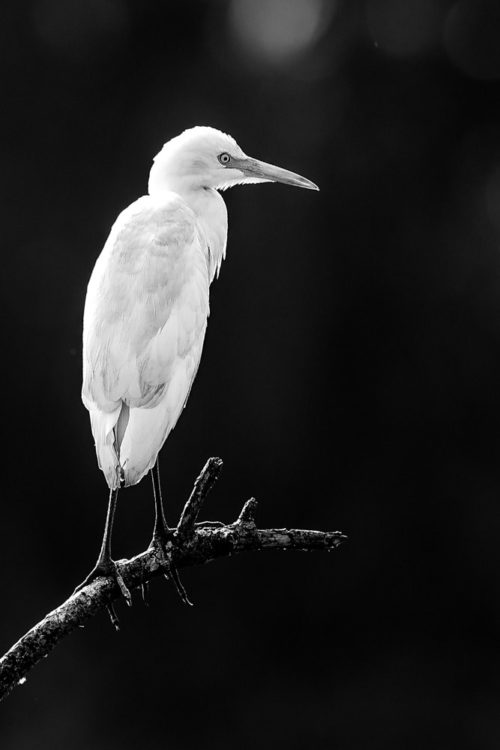
This species gives a quiet, throaty rick-rack call at the breeding colony, but is otherwise largely silent. The cattle egret nests in colonies, which are often, but not always, found around bodies of water. The colonies are usually found in woodlands near lakes or rivers, in swamps, or on small inland or coastal islands, and are sometimes shared with other wetland birds, such as herons, egrets, ibises and cormorants. The breeding season varies within South Asia. Nesting in northern India begins with the onset of monsoons in May.

The male displays in a tree in the colony, using a range of ritualised behaviours such as shaking a twig and sky-pointing (raising his bill vertically upwards), and the pair forms over three or four days. A new mate is chosen in each season and when re-nesting following nest failure. The nest is a small untidy platform of sticks in a tree or shrub constructed by both parents. Sticks are collected by the male and arranged by the female, and stick-stealing is rife. The clutch size can be anywhere from one to five eggs, although three or four is most common. The pale bluish-white eggs are oval-shaped and measure 45 mm × 53 mm.
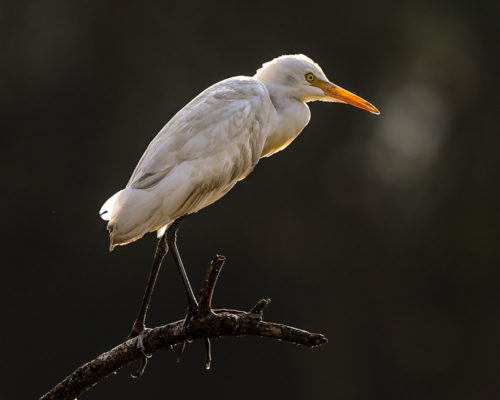
The cattle egret feeds on a wide range of prey, particularly insects, especially grasshoppers, crickets, flies, maggots, moths, as well as spiders, frogs, and earthworms.
A conspicuous species, the cattle egret has attracted many common names. These mostly relate to its habit of following cattle and other large animals, and it is known variously as cow crane, cow bird or cow heron, or even elephant bird or rhinoceros egret. Its Arabic name, abu qerdan, means “father of ticks”, a name derived from the huge number of parasites such as avian ticks found in its breeding colonies.

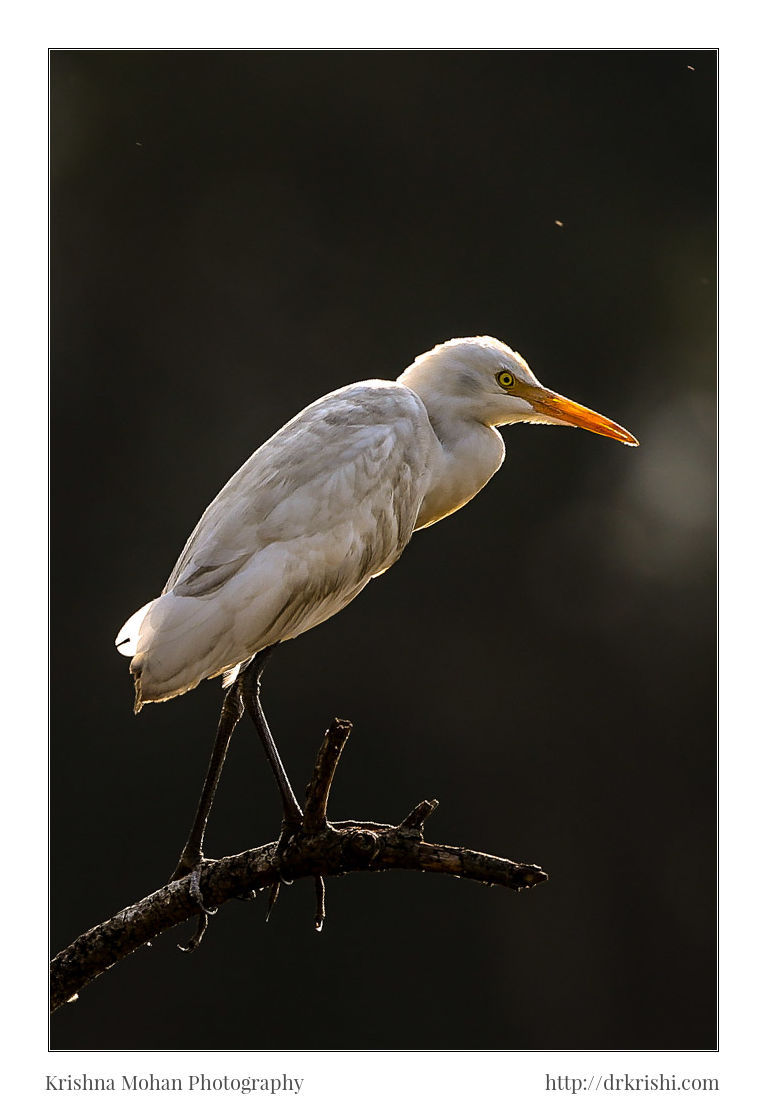
Wow, Outstanding, Always a right postion is important, after a long time, saw your work on Birds, I love your work and I’m mad about the work you do. God bless you and like to see more work on Bird’s photography.
Very informative Dr. Krishi
This is one of my dream shot sir , with rim light…
Very informative Sir…